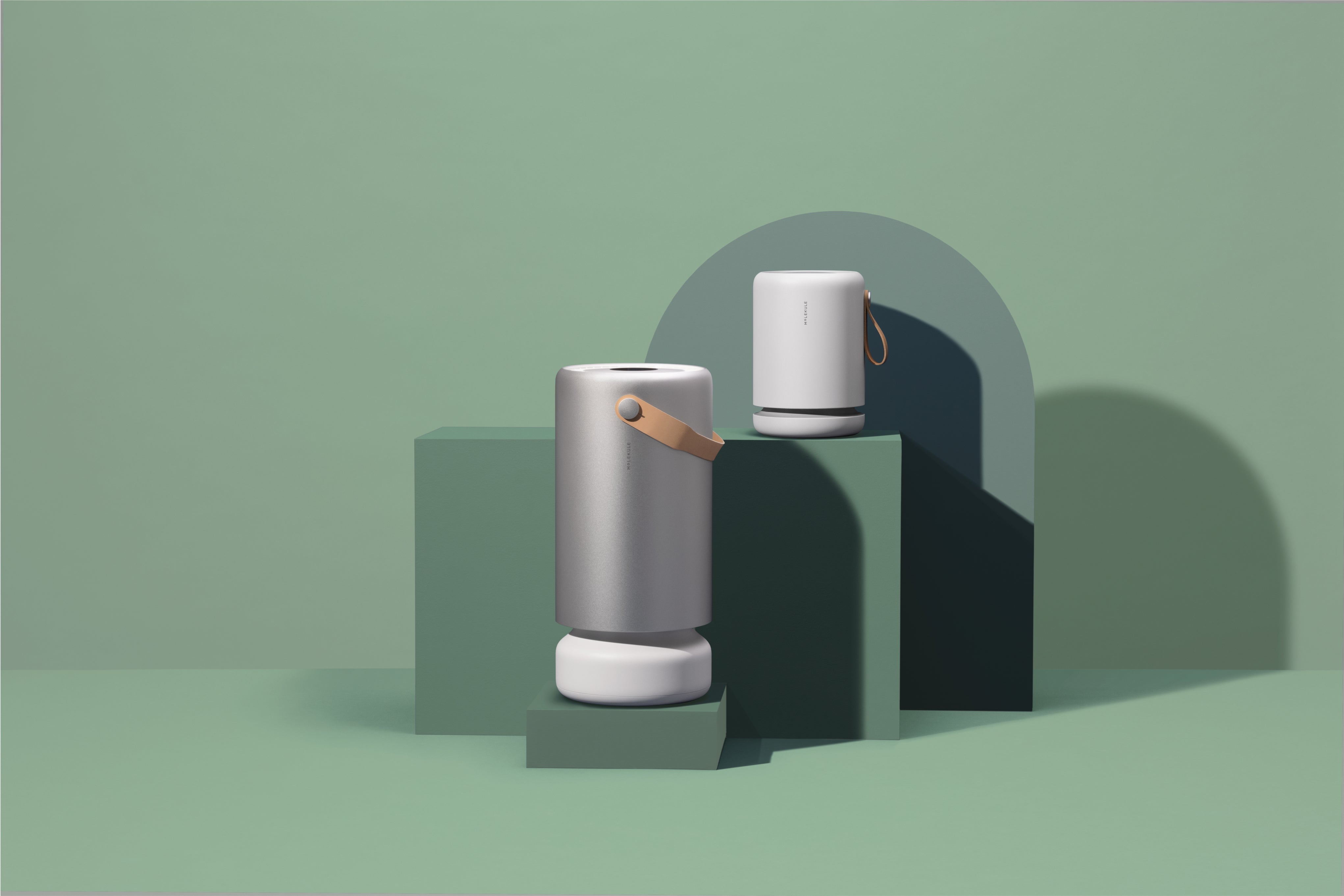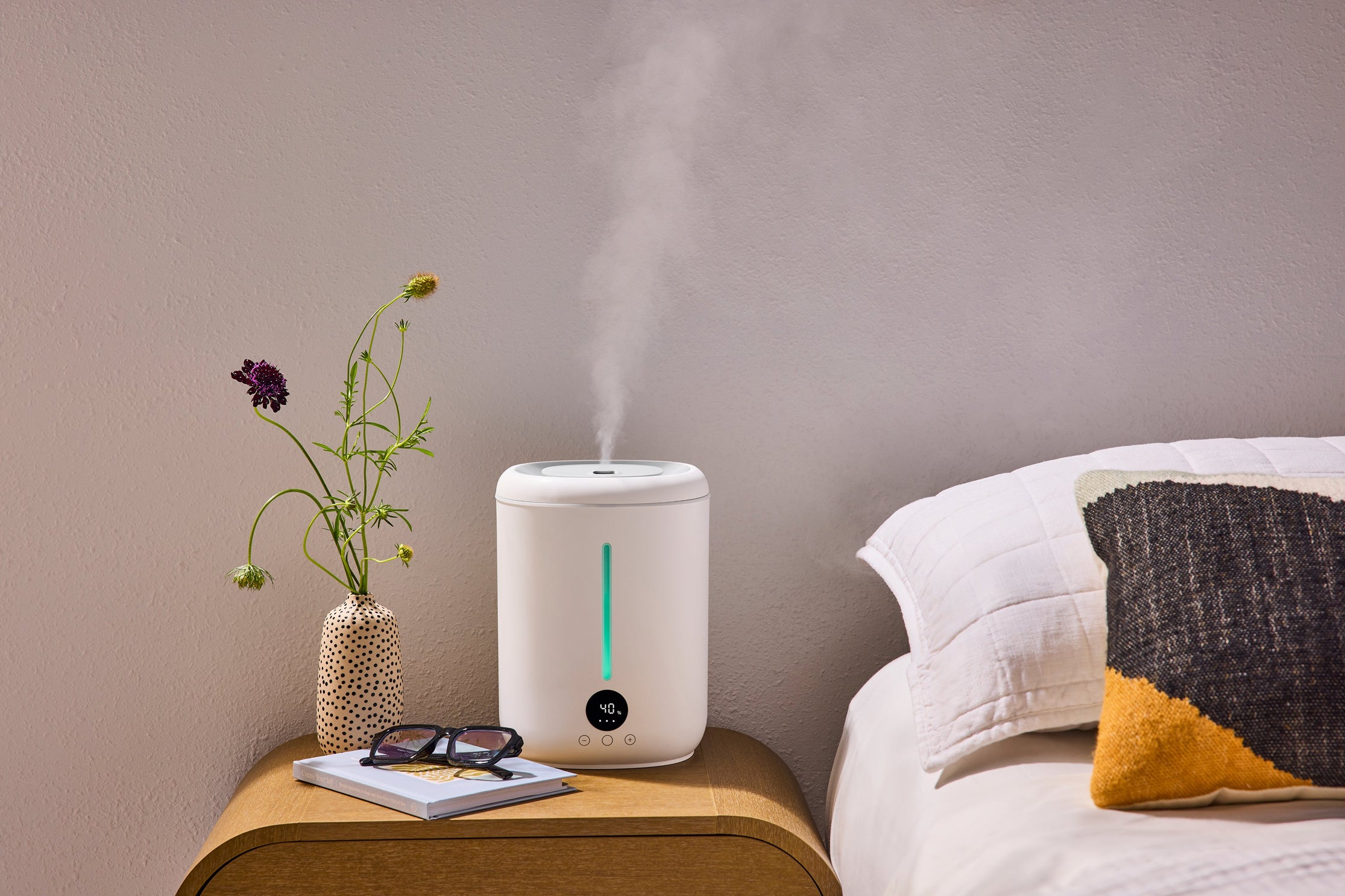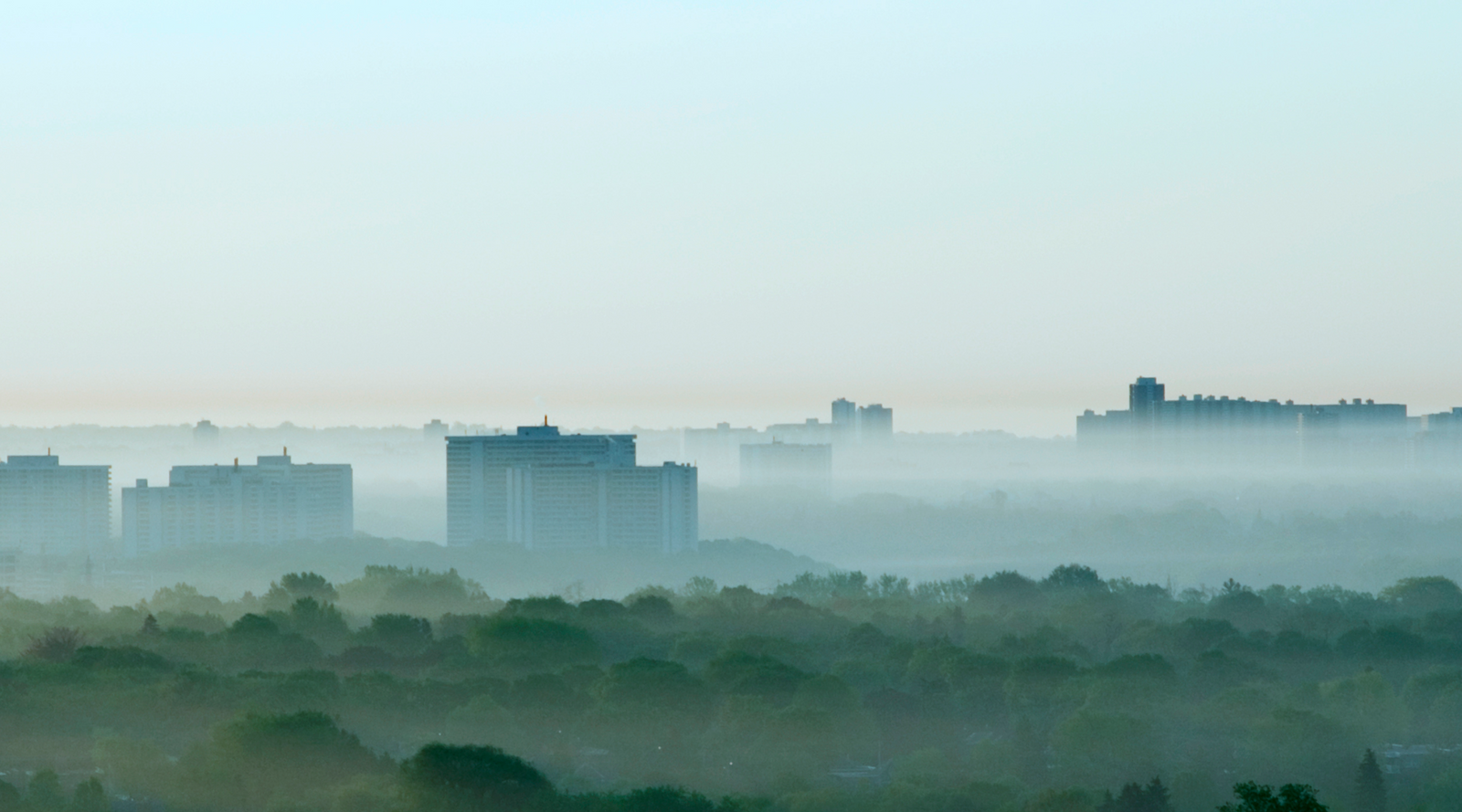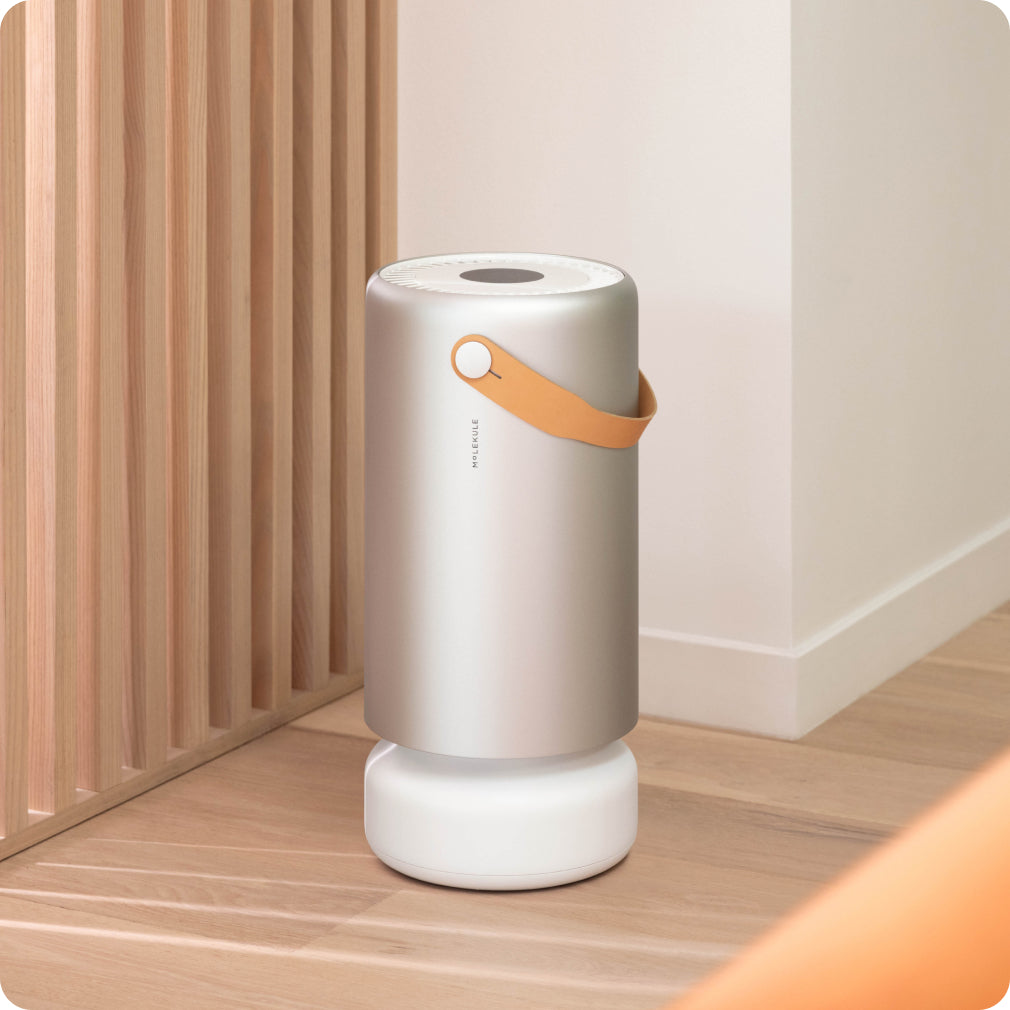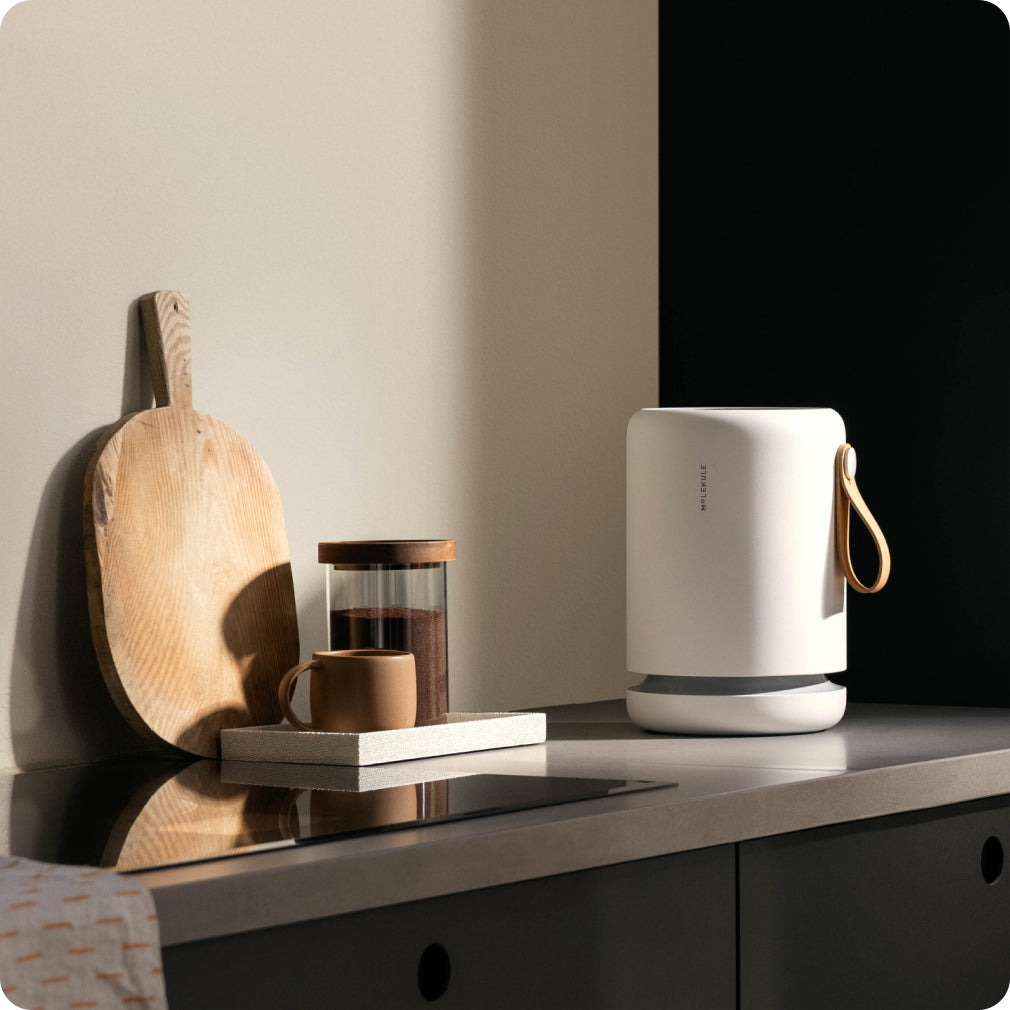Here at Molekule, we talk about air quality a lot. We research, think about and write about air quality a lot too. Sometimes you have to get back to basics and explore the fundamental problem of poor air quality. In order to understand what good air quality is, we need to know what makes air quality bad.
What makes some air have better “quality” than other air? How do we define poor air quality? How do we measure it and discuss it? And, more importantly, what do we do with that information? We will look at the EPA’s Air Quality Index and get an understanding of the role air quality plays in your life, and how you can protect yourself and your family when the air quality is poor.
What exactly is poor or unhealthy air?
In the U.S., the EPA measures five air pollutants: ground-level ozone, particle pollution, carbon monoxide, sulfur dioxide and nitrogen dioxide. These pollutants are all regulated by the Clean Air Act. They have monitoring stations around the country that measure the pollutants and return raw numbers. The EPA then converts these raw numbers into an Air Quality Index (AQI) score. You can see the current color for your area on the AQI map, then look up the AQI score in a color-coded chart for a quick and easy way to see what the air quality in your city is on any given day.
The AQI scale is from zero to 500.
- 0-50: Green. Good air quality.
- 51-100: Yellow. Moderate air quality.
- 101-200: Orange. Unhealthy for sensitive groups.
- 201-250. Red. Unhealthy air quality.
- 251-300. Purple. Very unhealthy air quality.
- 301-500. Maroon. Hazardous air quality.
Each pollutant is rated separately, because they have different effects and different populations can be sensitive to one pollutant more than others. For instance, your city might have a low score for particulate pollutants, but also have an alert for Orange levels of ozone.
Many American cities stay at the Green level for most of the year. Due to the Clean Air Act, overall air pollution levels in the U.S. have been generally declining since the 1960s. Orange and Red AQI levels are rare in most places, and Maroon is extremely rare except during wildfires. In 2017, Hilo, Hawaii had the worst air quality in the U.S., with an AQI median score of 146 for sulfur dioxide. But that was due to Hilo’s proximity to the active volcano Mauna Loa. The second worst air pollution in the U.S. in 2017 was in Riverside, California, with a median AQI of 99 for ozone. Several California cities suffer from high ozone levels because of a combination of human-made pollution, climate and geography.
You can always check the AQI map to find out about the air pollution is in your area. Any time a pollutant is scored at 101 (Orange) or worse, you may want to give some thought to any outdoor activities you have planned.

Air quality and your health
AQI levels are based on the knowledge that high levels of pollutants have both short and long-term health effects on humans. Those effects can differ for different populations and different pollutants. An orange AQI score may mean the air is unhealthy for sensitive groups.
According to the EPA, “People with lung disease, children, older adults, and people who are active outdoors are considered sensitive and therefore at greater risk” when ozone levels are between 101 and 200. Also “People with heart or lung disease, older adults, and children are considered sensitive and therefore at greater risk” when particulate pollution levels are between 101 and 200.
Physical activity may be a significant risk factor when pollutant levels are at Orange or above for two reasons. First, at high exertion levels, people tend to breathe through their mouth instead of through their nose. The nose and nasal passages act as a filter to remove some pollutants from the air before the air reaches the lungs. Breathing through the mouth bypasses this natural filter system. Secondly, exertion makes people breathe deeper and faster, so a greater volume of air is moving through the lungs exposing them to more pollutants.
Specific health effects of elevated air pollution levels include:
Ozone
- Short-term: coughing, sore throat, reduced lung function, worsened asthma symptoms.
- Long-term: increased susceptibility to infections, lung cell damage, permanent lung damage.
Particulate pollution
- Short-term: worsened asthma symptoms, increased rate of medical events (including death) for people with heart or lung disease, shortness of breath.
- Long-term: increased risk of lung disease and heart attack, increased susceptibility to infections, worsened symptoms of respiratory disease.
Carbon monoxide
- Short-term: reduced alertness, vision problems, chest pain and shortness of breath for people with cardiovascular disease.
- Long-term: effects of low-level carbon monoxide exposure are poorly studied and unclear.
Sulfur dioxide
- Short-term: serious worsening of asthma symptoms, including restricted airways; at high exposure levels, even non-asthma sufferers may experience these symptoms.
- Long-term: worsened asthma and other respiratory symptoms.
Where does poor air quality come from?
There are many potential sources of air pollution, some which are colorless and odorless. The most reliable source of information on current air quality levels is the current AQI score for your area. Air pollution can spike due to seasons, weather patterns, natural disasters or even time of day. Knowing about pollution sources and patterns can help you avoid the worst of it.
Ozone is usually formed as a side effect of other chemicals in the air breaking down. Pollution from cars, refineries and other industrial facilities are common sources of chemicals that ultimately become ozone. The hot, summer sun can quickly break down chemicals into ozone. Without wind to disperse the ozone, they can reach high levels.
Particulate pollution comes from a wide variety of sources. The most common and dangerous are automobiles and fires. Busy highways generate large amounts of particles, from worn concrete, rubber tires and car brake pads. Fires, whether from wildfires or wood-burning stoves, create a high volume of fine particles. These are the most dangerous kind because they can easily find their way into the lungs.
Ozone and particulate matter are the most common and hazardous to most people. However other pollutant sources are important to understand as well. Carbon monoxide pollution comes almost entirely from vehicle exhaust, and is worse during cold weather (when inefficient combustion results in the production of more carbon monoxide). Sulfur dioxide is an industrial pollutant generated by the burning of fossil fuels, and tends to be at high levels near coal power plants.
How to deal with poor air quality
What should you do if the AQI indicates unhealthy pollutant levels in your area?
- Stay indoors. Your house is not airtight, so outdoor air pollution will eventually create indoor air pollution. But closing the windows and turning on the air-conditioning will definitely help if there is a spike in pollutant levels, especially one that you are sensitive to.
- Limit exercise. As we mentioned before, hard exercise leads to heavy breathing. That makes exposure to air pollution worse. If you are sensitive to air pollution due to asthma or heart disease, avoid exercise on heavy air pollution days. If you are not sensitive, you should still dial back exercise to avoid very heavy breathing.
- Get away. Sometimes the best solution is to temporarily get away from or avoid the source of the pollution. Avoid busy highways during rush hour, spend the weekend at a friend’s house if you live downwind from wildfires, or get out of the city on bad ozone days.
While we are usually focused on indoor air quality, air pollution ultimately affects indoor air as well as outdoor air, so understanding it and dealing with it is important for anyone who wants the cleanest possible air to breathe. Checking the AQI and knowing which pollutants you are sensitive to will allow you to mitigate the most severe air pollution related health problems.
